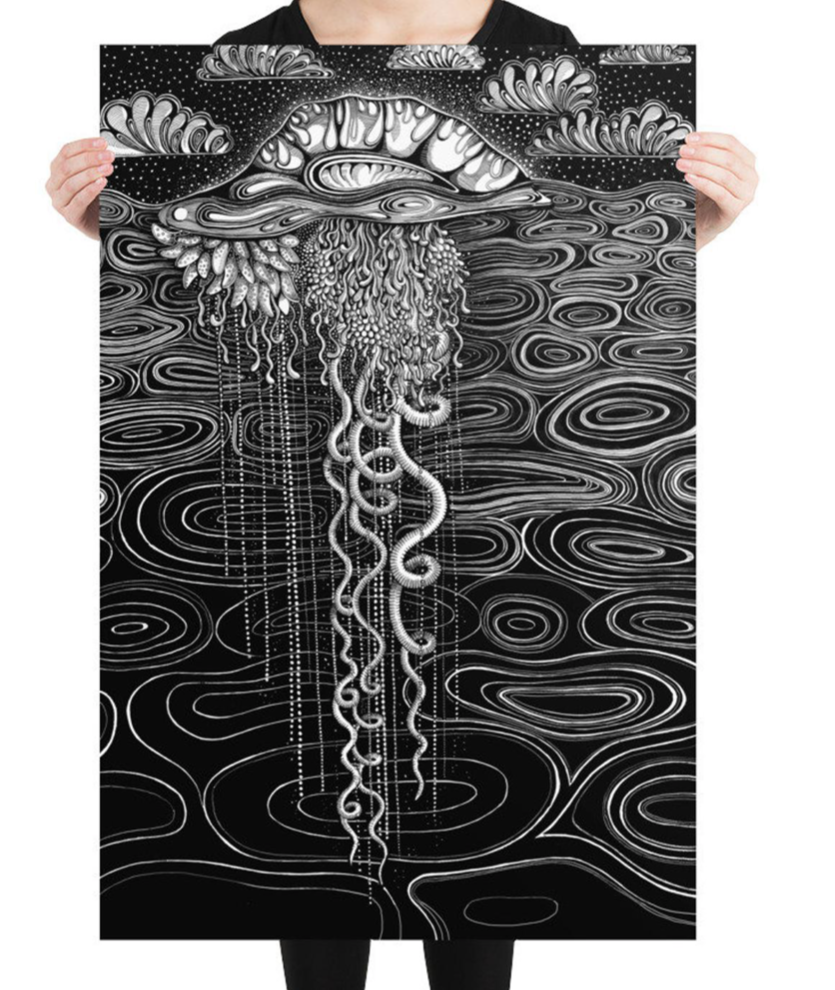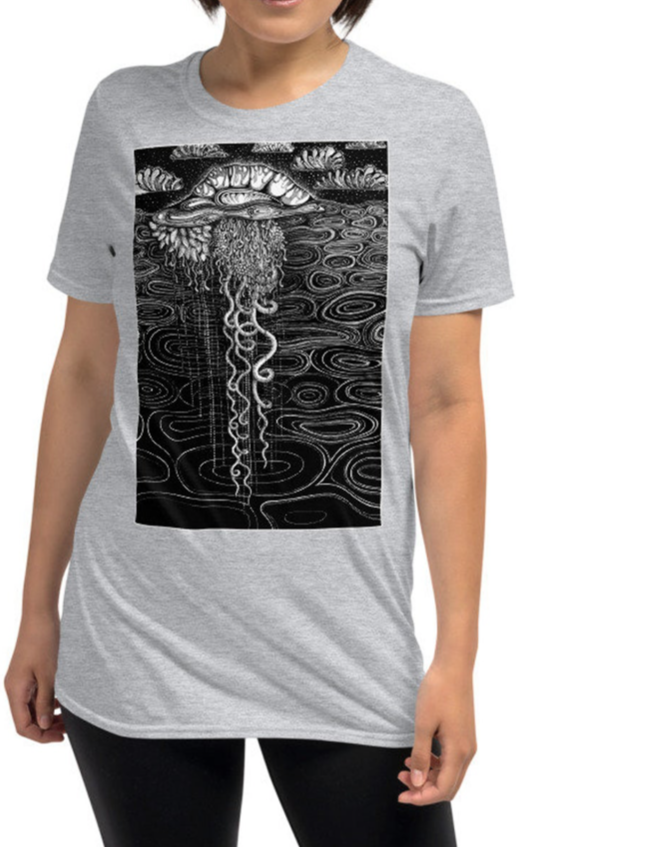Physalia physalis
(51 x 73 cm, Ink and Pen on Paper, 2021)

These gorgeous creatures are relatives of the jellyfish and are ecologically part of the oceanic neustonic biome: animals restricted to the ocean surface, where the sea and the air meet, in this case due to the conspicuous gas filled float, the resemblance of which to 18th century ships of war in full sail having given these animals their colloquial name: the Portugese man o’ war.
Physalia physalis are further interesting as they blur the line between individual and colony, of the parts and the whole. Like corals (whom they share a phylum with) they are colonial animals, and the form that we recognize as an individual is in truth a congregation of multiple polys, differentiated in their types. Different types fulfill specific and exclusive roles, such as Gastrozoids (concerned with feeding the colony), Gonozoids (concerned with reproduction), Dactylozoids (armed with stinging cells or cnidocytes for hunting and defense) or the Pneumatophore that keeps the whole shebang afloat. These different polyps or “zooids” are in a sense identical twins as they all originate from the same fertilized egg. This means that while embryologically they have to be differentiated from each other and act as different entities, ecologically the colony essentially acts as an individual with the different zooids acting more as organs than separate beings.
The original is available, for pricing and to add it to your cart follow the link below:


